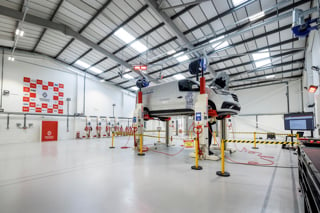Jaama has launched a new Maintenance Exchange platform, which allows seamless booking, authorisation, invoicing and auditing of vehicle maintenance work.
The new end-to-end maintenance and compliance platform provides the exchange of information between fleet management companies, maintenance providers and end-user fleets.
It integrates with Jaama’s Key2 asset management system and can interface with other third party systems too.
The new platform connects fleet management companies or end-user fleets to maintenance suppliers, reducing the administrative burden of manual processes.
For commercial vehicle end-user fleets, Maintenance Exchange also enables them to collect information for the Driver and Vehicle Standards Agency’s (DVSA) Earned Recognition Scheme that monitors fleet compliance data.
Commercial end-user fleets that use Key2 are able to send defined Earned Recognition Scheme key performance indicator information to the DVSA every four-weeks including data captured from driver defect checks, servicing and MoTs.
Vehicle maintenance work is authorised through the platform and built-in rule sets mean that invoices for jobs carried out can be paid in a timely manner, once all required documentation is present.
Martin Evans, managing director of Jaama, said: “Development of Maintenance Exchange enables fleet and transport managers to centralise their view of all compliance data and documentation, which is exactly what they want and need.
“Maintenance Exchange also enables fleets to implement service level agreements with their vehicle maintenance suppliers to further improve document delivery without manual intervention.
“Businesses are recognising the benefits of digitalising documentation. As a consequence, Maintenance Exchange further enables fleets to embrace technology to drive administration and operational efficiencies as we move ever-closer to a paperless business environment.”
Jaama invests some £2.6 million a year in the continuing development of Key2 but many product developments, including Maintenance Exchange, are as a result of requests from its customers, which are all focused on seeking mechanisms to reduce manual intervention as much as possible.





















Login to comment
Comments
No comments have been made yet.